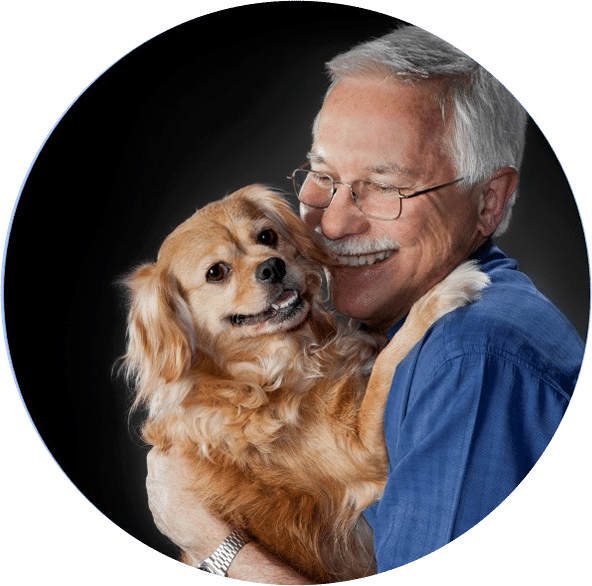Recognising Signs of Ill Health in Birds
Is your bird a picture of health or does it look more like a feather duster with an identity crisis? Recognising when your bird is unwell is important because by the time it looks unwell it can be in serious strife. The following information may help to ensure you treat your feathered friend quickly should it be suffering from an illness.
Act Quickly If Your Bird is Ill

A change in your bird’s attitude is, unfortunately, the first thing that may bird fanciers notice. If your bird is sitting at the bottom of its cage and is inactive, perhaps with its feathers fluffed up and its head turned to one side, then you have a seriously ill bird. Birds naturally will hide an illness to prevent themselves being picked on by other birds. Therefore if it looks ill, you that have probably missed many earlier signs. In a case like this, immediate veterinary attention is vital if it’s to be saved.
| If your bird is sitting at the bottom of its cage and is inactive, then you have a seriously ill bird |
A sign that you may often miss is a reduction in the bird’s body condition. You can best determine this by feeling your bird’s breast bone or keel. If the breast bone is prominent and can be felt like a ridge then this shows that the breast muscles on either side have reduced in size. The bird has lost weight and needs attention. This test does rely on your regular handling of the bird to feel its breast bone and is a good reason to ensure that your bird is hand-tame.
If you have a set of accurate scales, it’s a good idea to weigh your bird regularly, just as you would your other pets, or even yourself. Be sure to keep a record of your bird’s weight. If you have a colony of birds, purchasing an accurate scale for this purpose is a good idea. Some birds will sit on a perch placed onto the scales – especially if they have a tasty food reward to eat. To weigh a bird that is not so tame, place it in a light cardboard box or an empty ice cream container for a short moment.
Examining Your Bird’s Droppings
Regular examination of your bird’s droppings is an absorbing pastime but what should you look for? It’s not that easy because, unlike other animals, a bird’s droppings consist of three components. This is because birds pass their droppings via and opening called a cloaca Faeces, urine and other waste products are mixed as they pass through the cloaca.
The solid part is the bird’s faeces that, just like any other animal’s, is composed of the waste from digested food. The second portion is the urine or liquid portion and the third portion consists of urates. Urates are a creamy waste product that the kidney produces and usually appear suspended in the urine or sometimes spiralled around the faecal portion.
| If your bird looks unwell, it’s very ill and needs attention. |
The faecal portion is usually black or dark green, the urine is clear and the urates are white.
Place a piece of white paper on the bottom of the cage. This will help you to examine the droppings, the amount produced and the regularity of their production. Look for any change in the colour of the faecal, urinary or urate portion of the droppings. If the faecal component becomes soft or watery, this means that diarrhoea is present, although with nectar and fruit-eating birds, the droppings are usually more liquid anyway. If the volume of urine increases then kidney disease is one possibility or if the urates increase, then a variety of organ diseases could be the cause.
Does your bird have swellings around the abdomen or near the cloaca? Perhaps matted droppings are sticking to the feathers around its ‘nether regions’. This certainly means you have a sick bird.
How Much Food Is Your Bird Eating?
Often illnesses are associated with a reduction in the amount of food being eaten. This is very difficult to assess by looking at the seed container. A better way is to become acquainted with how full your bird’s crop (near the base of its neck) normally feels. If it’s repeatedly empty, then the bird may not be eating well.
Also look at the way in which your bird is breathing. If it appears to be breathing heavily or if its tail bobs as it breaths, then it’s not well. Watch also for changes in the bird’s voice and for sneezing or wheezing. Birds with lung disease often ‘click’ when they breathe too.
How do the bird’s nostrils and eyes look? If a discharge is present, or one or both eyes appear partly closed or swollen, then the bird is unwell. Crusty lesions around the nostrils and a honeycomb appearance to the beak are also a sign of disease, especially if the feet are also involved.
Many birds suffer from lumps and growths. Some are obviously external – perhaps on the skin – while others develop internally, often inside the abdomen. Sometimes these lumps are not dangerous in their own right, but grow to such a size that they impede the bird’s movements.
Don’t risk your bird’s life by delaying treatment if you suspect your bird is unwell and remember – if your bird looks unwell, it’s very ill and needs attention.
